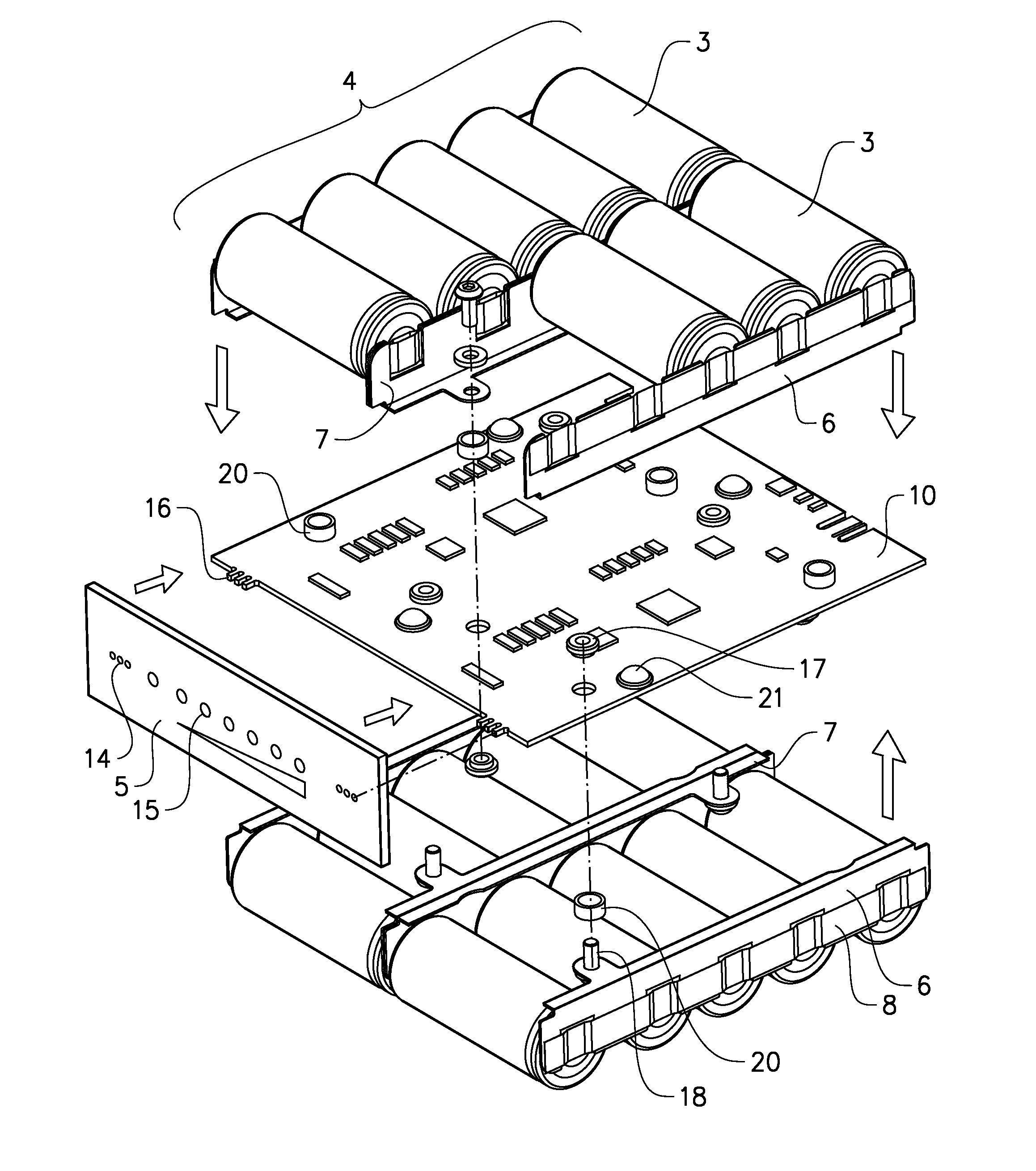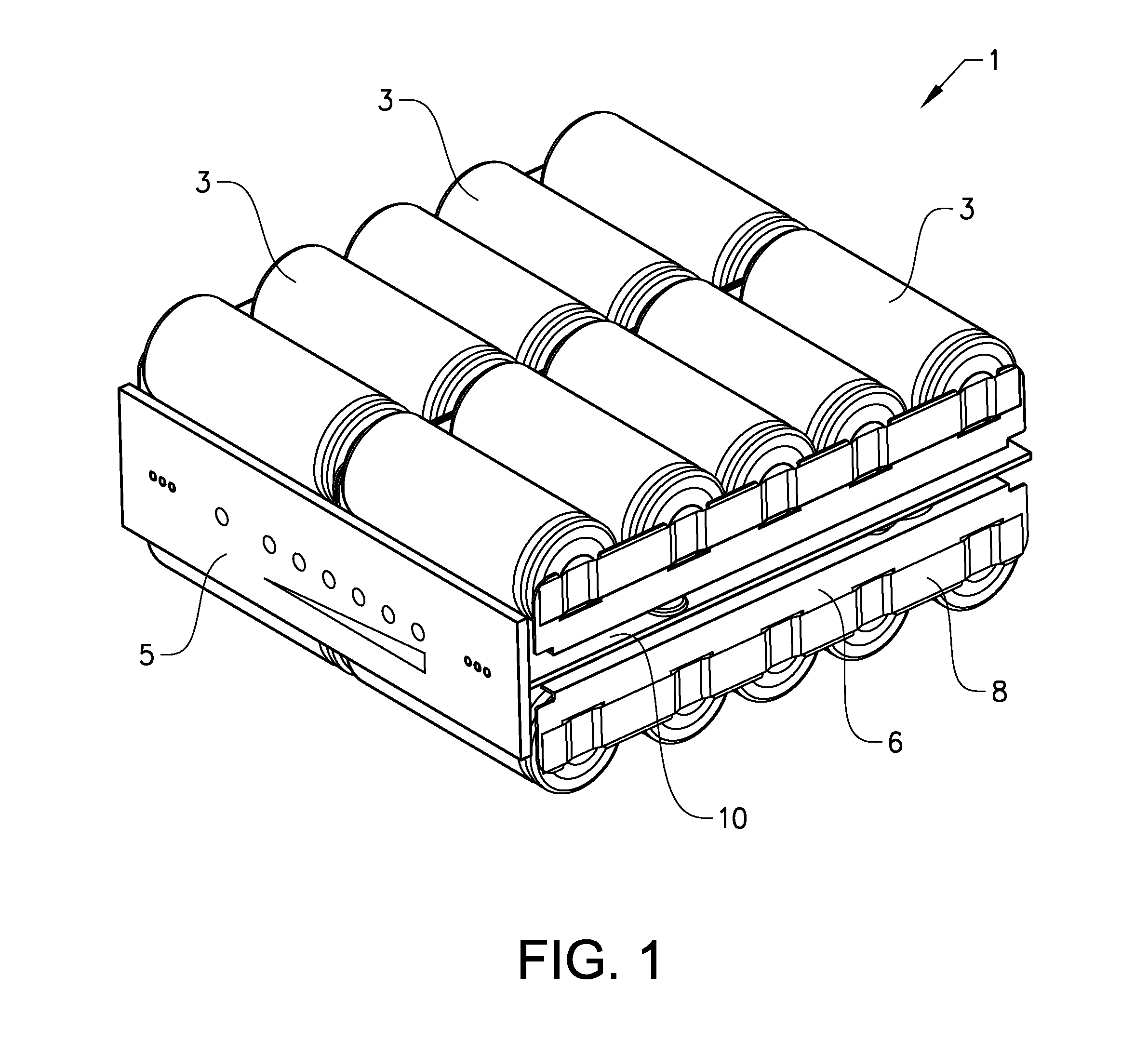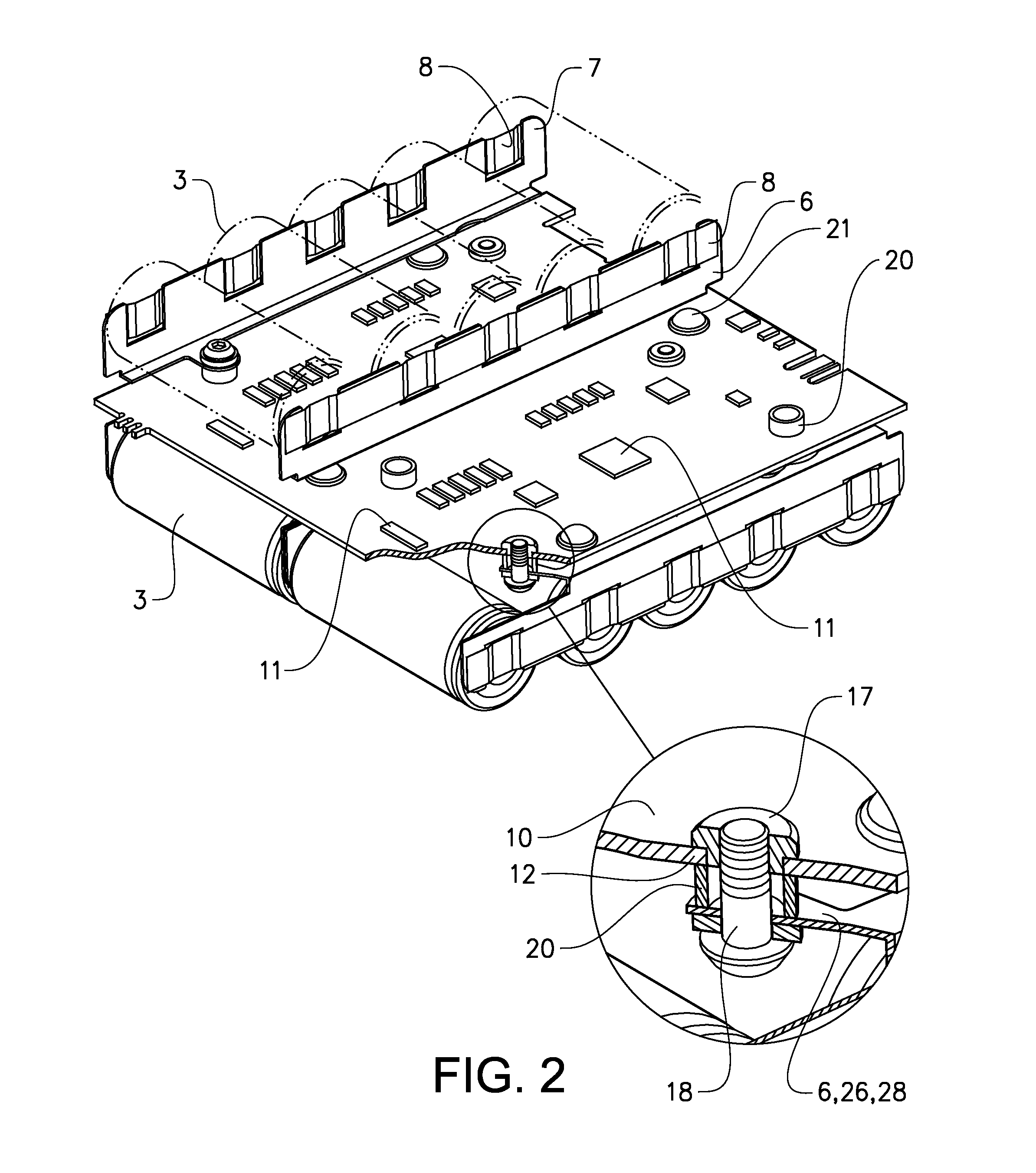Battery assembly
a battery and assembly technology, applied in the direction of secondary cell servicing/maintenance, cell structural combination, cell components, etc., can solve the problems of difficult to properly hold the cells in place, difficult to manufacture, and high electrical losses, so as to reduce electrical losses, reduce electrical losses, and reduce electrical losses.
- Summary
- Abstract
- Description
- Claims
- Application Information
AI Technical Summary
Benefits of technology
Problems solved by technology
Method used
Image
Examples
Embodiment Construction
[0038]FIGS. 1-3 show a first preferred embodiment of a battery assembly 1 according to the invention. FIGS. 4-6 show details of the assembly 1.
[0039]In general, the battery assembly 1 comprises, in this example, four similar blocks 4 of rechargeable battery cells 3, a printed circuit board (PCB) 10 provided with an electronic circuit 11 (only schematically shown in the figures) configured to monitor and control the battery assembly 1 and to balance each of the cell blocks 4, and interconnecting means 6, 7, 8, 17, 18, 20, 28 arranged to electrically interconnect the individual cells 3 of each block 4 and to electrically connect the cell blocks 4 to the PCB 10.
[0040]Two cell blocks 4 are arranged on each side (i.e. on each main surface) of the PCB 10. Rigid, electrically conducting spacers 20, as well as resilient spacers 21, are arranged between the PCB 10 and the cell blocks 4 on an upper side (component side) of the PCB 10. Rigid, electrically conducting spacers 20 are also provide...
PUM
| Property | Measurement | Unit |
|---|---|---|
| thickness | aaaaa | aaaaa |
| current | aaaaa | aaaaa |
| thickness | aaaaa | aaaaa |
Abstract
Description
Claims
Application Information
 Login to View More
Login to View More - R&D
- Intellectual Property
- Life Sciences
- Materials
- Tech Scout
- Unparalleled Data Quality
- Higher Quality Content
- 60% Fewer Hallucinations
Browse by: Latest US Patents, China's latest patents, Technical Efficacy Thesaurus, Application Domain, Technology Topic, Popular Technical Reports.
© 2025 PatSnap. All rights reserved.Legal|Privacy policy|Modern Slavery Act Transparency Statement|Sitemap|About US| Contact US: help@patsnap.com



